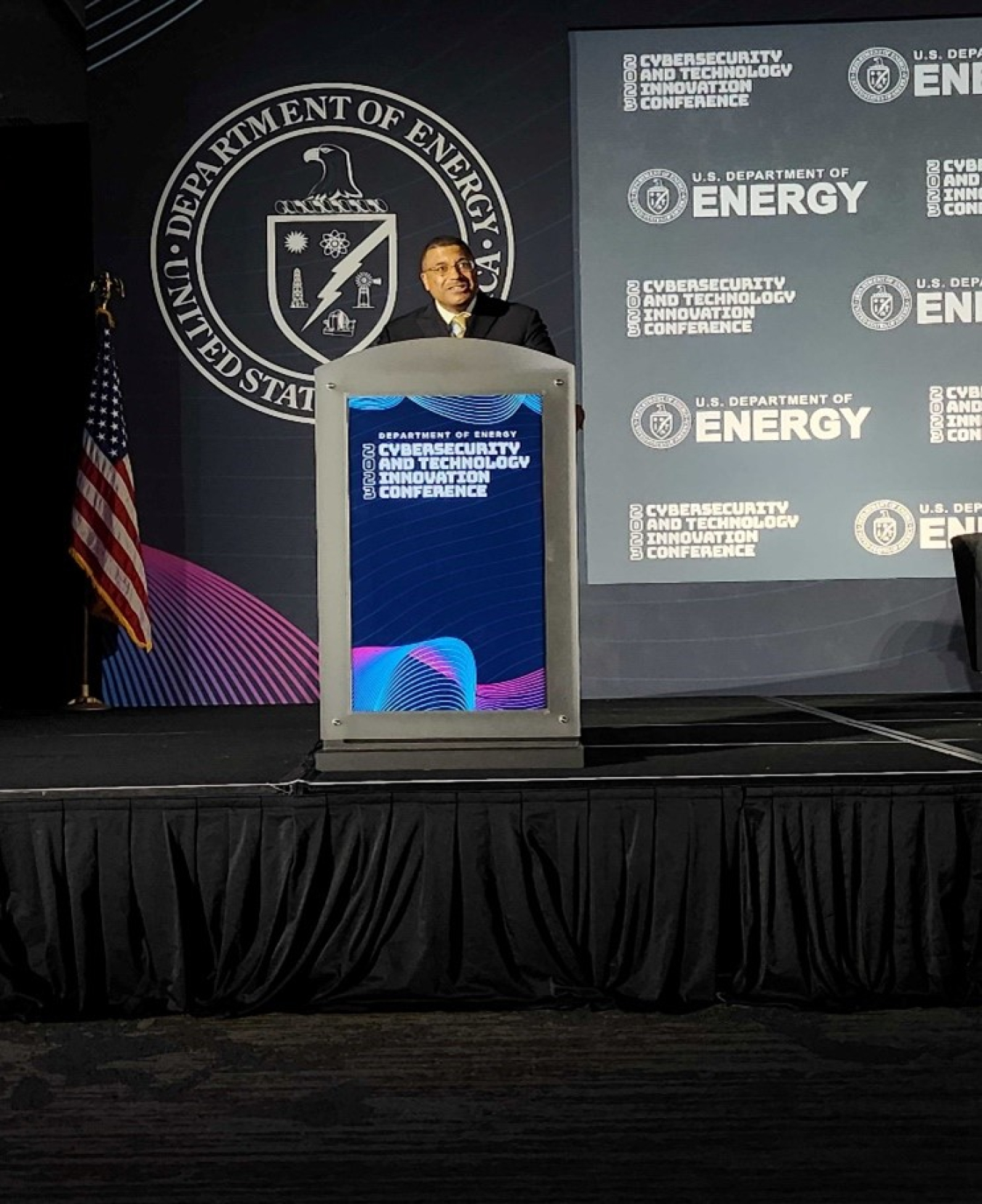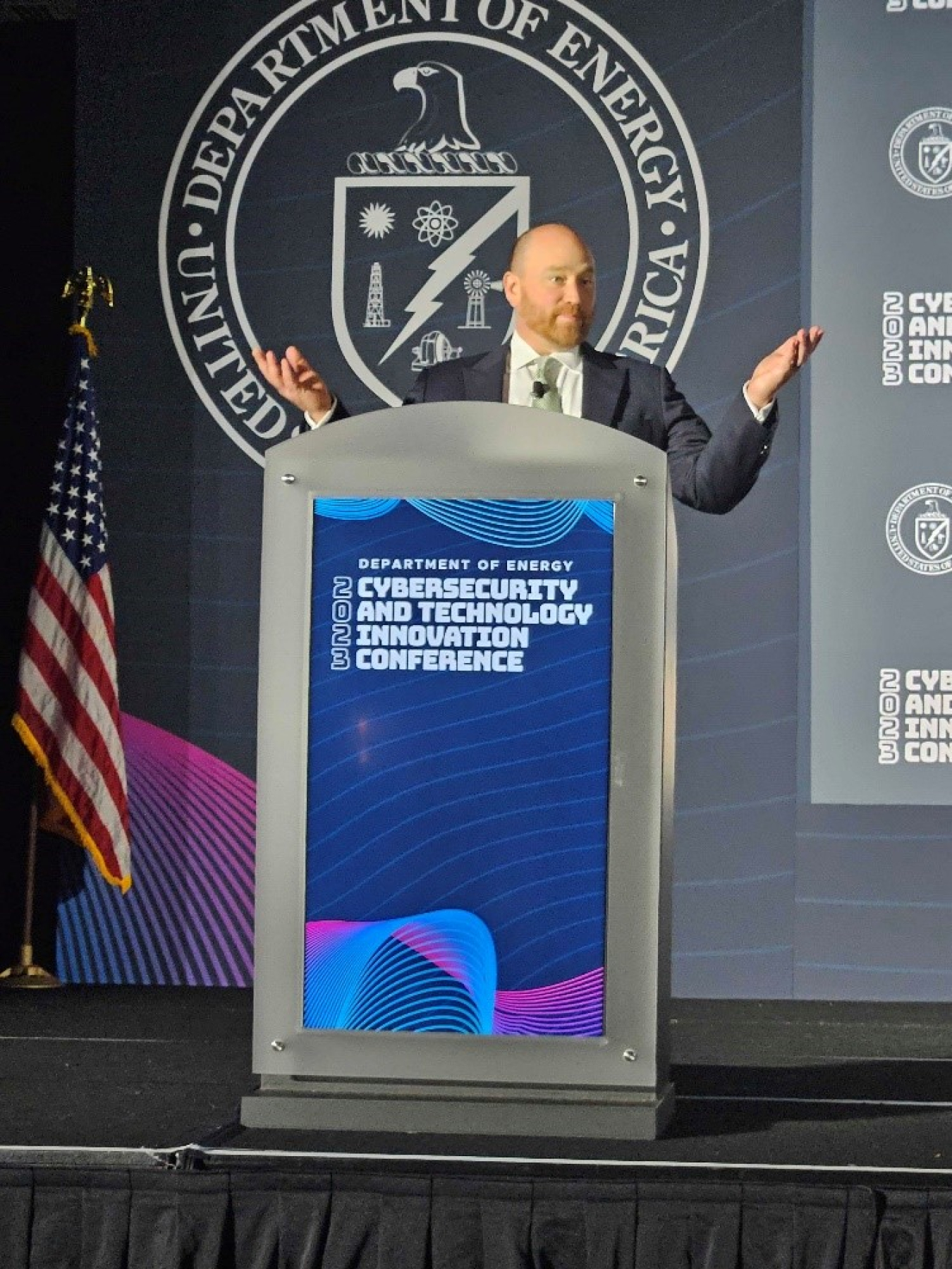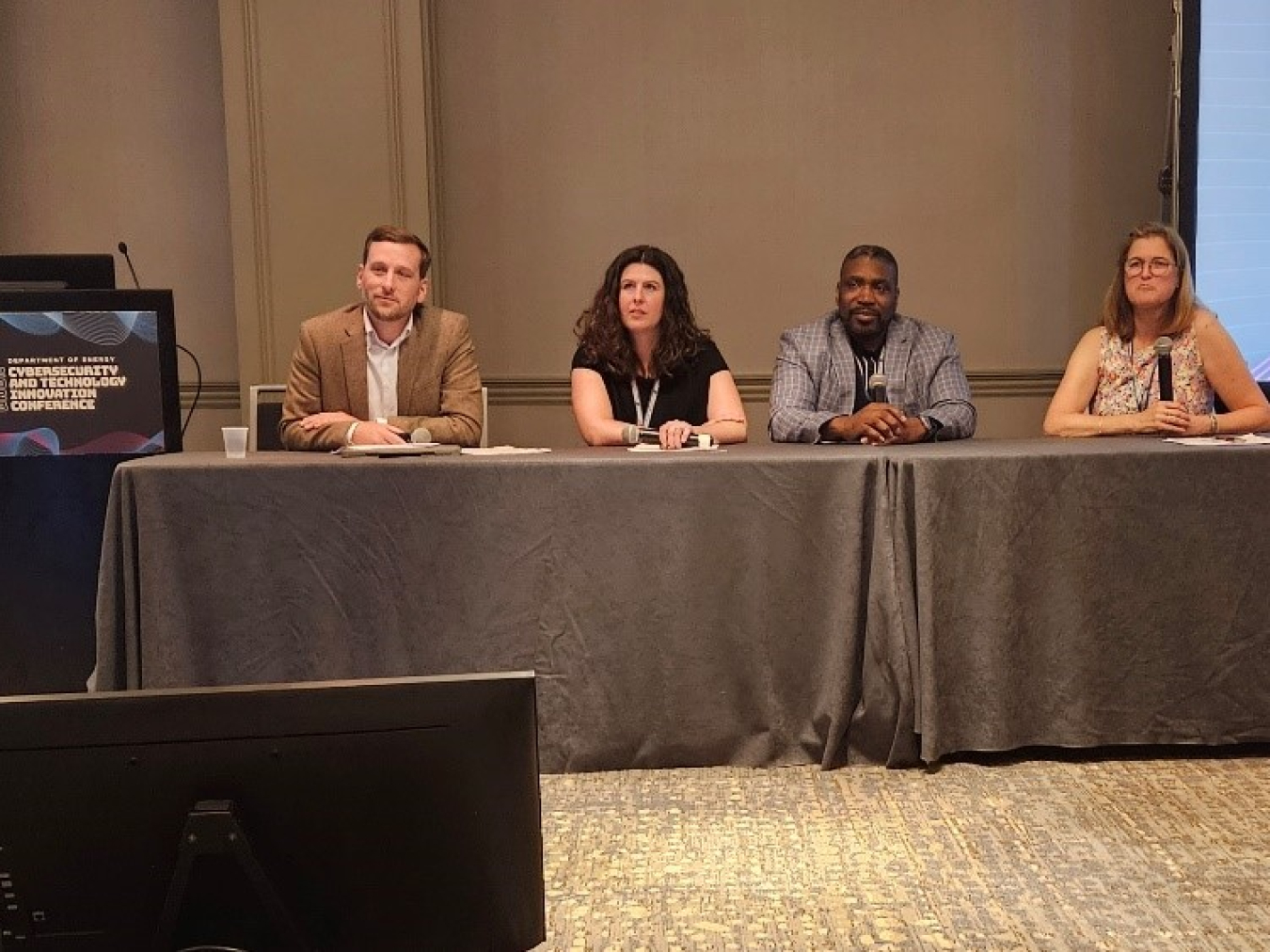Article summarizing NNSA/NNSA-IM participation in annual DOE Cybersecurity Conference.
National Nuclear Security Administration
June 1, 2023
From May 8-11, NNSA co-hosted the Department of Energy’s annual Cybersecurity and Technology Innovation Conference in Minneapolis, Minnesota. This year’s conference theme – “Collaborative Innovation and Collective Cyber Defense” – reflected the continued prominence of diverse cyber threats to U.S. and allied security and the need for partnerships to meet shared global challenges. With a registered attendance of approximately 1,300 information technology professionals and policymakers, the conference sought to strengthen relationships between offices, labs, sites, and plants in the development of a collaborative vision for the Department.
NNSA participation in the conference was led by Principal Deputy Administrator Frank Rose and Associate Administrator for Information Management and Chief Information Officer James Wolff. In his keynote address on May 10, Rose discussed how NNSA is addressing constantly evolving cyber challenges both across the Nuclear Security Enterprise and by helping foreign partners protect their networks. “NNSA is not an island” when it comes to cyber defense, he said. “Our success depends on collaborations with a broad array of partners within the Department, in the interagency, and around the world.”

Similarly, in opening a plenary session on “Public-Private Partnering to Strengthen and Secure the National Digital Ecosystem” Wolff stated: “It's impossible to overstate the importance of robust public-private partnerships in driving innovation and technological advancement. Time and again, these collaborations have demonstrated their effectiveness in addressing disparities in demand and resources, enhancing quality and accessibility, and striking the perfect balance between risk and benefit.”
NNSA, the lead on the conference workforce track, structured several sessions to identify strategies that fortify and support the current workforce, while highlighting cutting-edge techniques in recruitment and retention. Senior Cybersecurity Analyst Tameika Turner moderated the “Exploring the Diversity and Inclusion Gap in IT and Cybersecurity” panel on May 9th. The panelists discussed initiatives and programs currently being implemented across the National Security Enterprise to ensure the cyber workforce is diverse and inclusive. “Cybersecurity plays a crucial role in our lives today,” Turner noted, “and it's essential that we have a diverse group of experts protecting our online assets.”
On the 10th, Director of Mission Support Marina Kirakosian led a panel on “Spotlighting Women in IT and Security: Female Leaders Reshaping the Industry” in which panelists highlighted female pioneers in IT and Security and how they are trailblazing a future path for women in science and technology. Eric MacEwen, Enterprise Program Management Office Federal Lead, participated as a panelist in a discussion titled “Managing Supply Chains and Mitigating Global Risk.” During this session, the panelists discussed the international supply chain ecosystem and the inherent risk and vulnerability.
Also on the 10th, Deputy Associate Administrator for Information Management and Chief Information Officer Steven McAndrews moderated a panel on “Machine Learning, Artificial Intelligence, and the Future Workforce.” The panelists – which included NA-IM data scientist Erica Vosseller – discussed the evolution of artificial intelligence (AI) technology and its substantial impact on innovation as well as employment. “We are on the brink of making strategic investments in AI that would combine data-driven machine intelligence and human expertise to strengthen NNSA’s cyber defenses,” McAndrews noted, adding that while AI and machine learning’s impact on the workflow “may seem like a threat to the workforce . . . there will be mechanisms and standards put in place to protect workers.”
Finally, on May 11, Associate Chief Information Officer of Cybersecurity Scott Engelson led a panel discussion titled “Keeping the Enterprise Secure in a Hybrid Environment.” During this session, panelists discussed the challenges with managing teams in a semi-remote environment and how leaders ensure that their teams keep pace with a rapidly evolving threat landscape. They also offered Chief Information Security Officer-level perspectives on security hygiene, critical infrastructure, and insider threats.
Thie conference provided development opportunities for individuals and organizations through collaborative learning and sharing of industry best practices, discussing the future of cybersecurity and IT within the Federal government, and how best to apply new technologies and lessons learned within the Department. “The annual DOE IT and Cyber conference is a great way to bring together all the program offices, as well as people from the labs, plants and sites, to exchange ideas that contribute to the Department’s and NNSA’s mission,” said Wolff.


